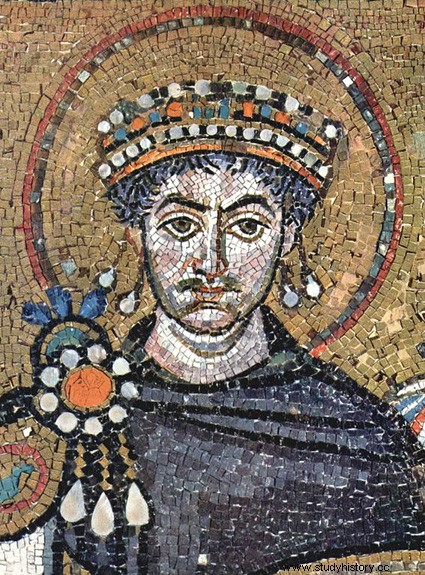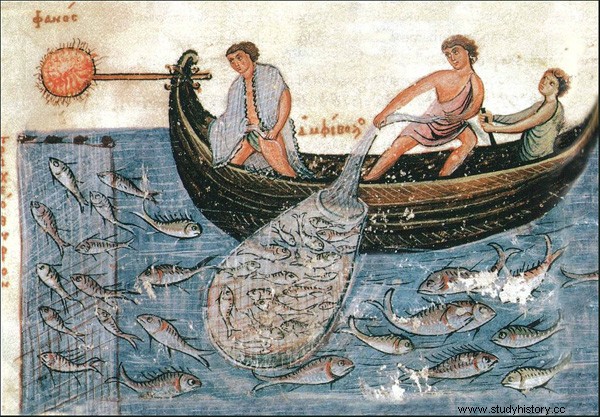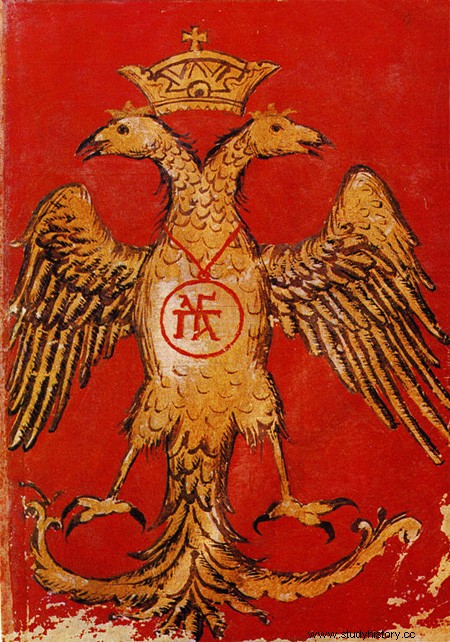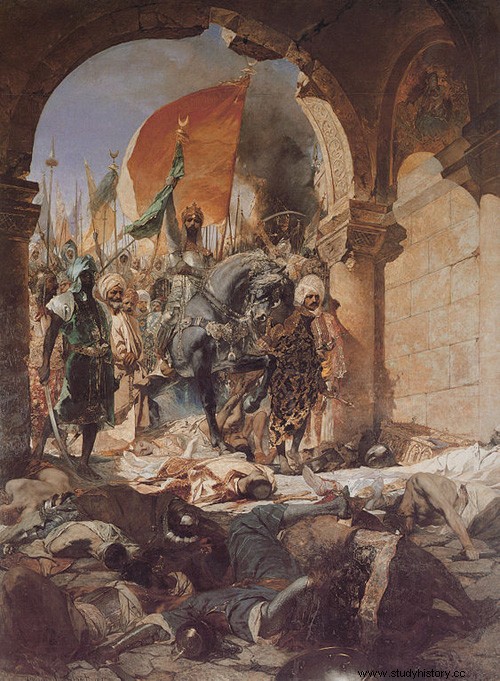
FROM 400 TO 500:The Byzantine Empire enjoyed great prosperity
Throughout the 5th century, the Byzantine Empire (still called the Eastern Roman Empire at that time) managed to contain barbarian invaders towards the West. (Visigoths, Huns and Ostrogoths ). The richest provinces are Syria, Palestine and Egypt. Schools and libraries proliferate in these capitals where intellectual reflections, philosophy and religion rub shoulders. Even if the decisions are made in Constantinople, it is in the East that Christian orthodoxy is defined. Christianity Orthodox or Orthodoxy is one of the three main Christian denominations. the other 2 are:The Catholic Church and the Churches resulting from the Reformation.
FROM 527 TO 565:Reign of Byzantine Emperor Justinian I
Justinianus became emperor on August 1, 527, on the death of his uncle who had adopted him. He is 46 years old and inherits a difficult situation because rural society is then very disorganized. As factions organize in major cities, riots break out and his throne is threatened. This is Empress Theodora that Justinian married despite the reluctance of those around him, who convinced him not to flee. This allows him to keep his throne. The reign of Justinian marks the end of antiquity in the East. The cities, the very foundations of the Roman world, cease to grow stronger as the medieval world of villages and fortresses spreads.
BETWEEN 528 AND 534:The Justinian Code
Justinian completely overhaul the legal apparatus and establishes the “Justinian Code ” which includes all the laws in force. It is one of the major works of his reign, but its somewhat hasty writing does not exempt it from faults and it contains many contradictions.

BETWEEN 532 AND 550:The Byzantine Empire reached its peak
Firmly installed on his throne, Justinian signs an eternal peace agreement with the king of Persia. Then he sets out to reconquer many territories that were once part of the Western Roman Empire. It is for him a necessity more ideological than strategic because he considers the Byzantine Empire as being the terrestrial image of the kingdom of God. He conquered easily and in less than a year North Africa, then dominated by the Vandals. He invaded Italy and seized Naples and Rome without firing a shot. But the Goths , led by Totila , regain ground. Justinian sends a powerful army to fight them and during 4 years of a merciless war, he hunts the Goths , Franks and Alamanni . He re-establishes imperial authority in a sacked peninsula while the Mediterranean once again becomes a Roman lake.
In the provinces , the Byzantine Empire is delivered to anarchy . Leaders of private militias challenge public authority, rob peasants and loot churches. Despite this, and thanks to the considerable resources acquired during his many conquests, Justinian imposes a prestigious and grandiose policy. His dream of building a great Christian Empire materializes and with his wife, he builds many churches and public buildings from Asia Minor to Italy. However, some regions do not participate in the general prosperity and they attract invaders. In 541, the plague ravaged the Empire and then reappeared repeatedly. But these are ultimately religious quarrels which reach the heart of the Empire and weaken it considerably:The question of monophysism and Nestorianism is not settled. After the death of Justinian, the Byzantine Empire was gradually reduced.

Byzantine art:
Artists of this era are renowned for their delicate embroidery and their sculptures in ivory. They also create huge mosaics with bright colors and religious paintings named icons.
The religious schism:
The churches of the Byzantine Empire have their own architectural style and services are celebrated in Greek. The Byzantine Church is headed by the Patriarch of Constantinople.
EN 635:Arab Invasion
70 years after the death of Justinian, the Byzantine Empire will not resist the invasion of the Arabs.
EN 1054:The Eastern Church separates from the Western Church
After many religious quarrels between the patriarch and the pope (elected head of the Roman Church in the West), the 2 churches eventually separated.
EN 1 204:The Crusaders capture Constantinople 
EN 1261:The Byzantines repel the Crusaders and defend their Empire
The Byzantines had to wage incessant battles against the Muslims and the Turks . They are threatened by tribes from the North and must fight the Crusaders from Western Europe, who are nevertheless their allies.
IN 1400:The Byzantine Empire is reduced to the territory around Constantinople
IN 1453:The Byzantine Empire collapses
The Ottoman Turks attack Constantinople which resists for 6 weeks but ends up capitulating.
